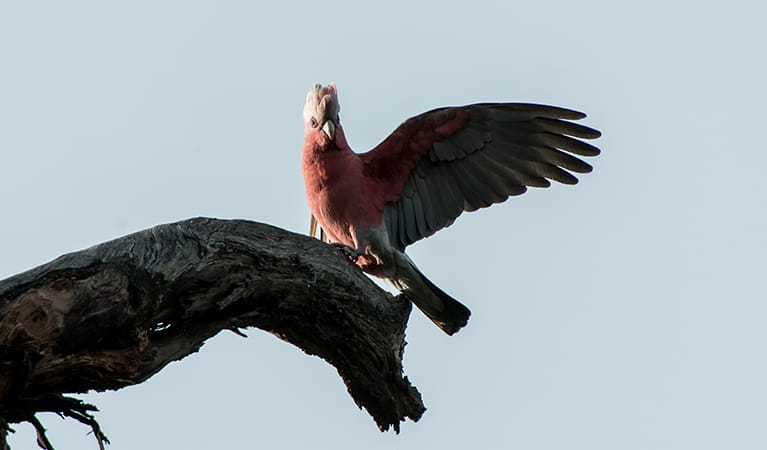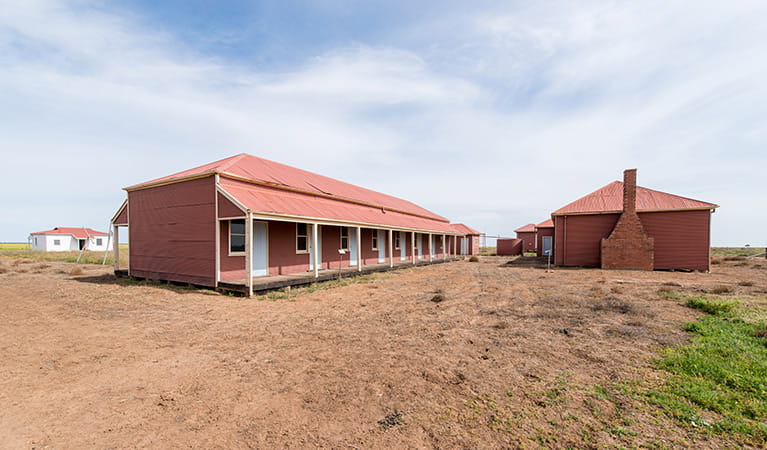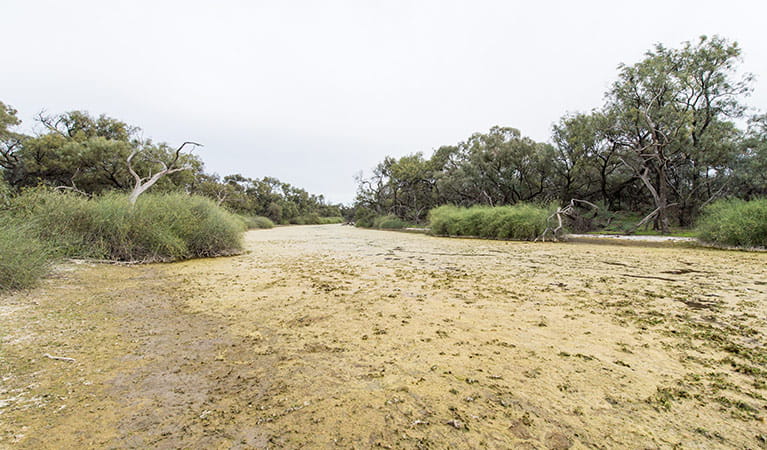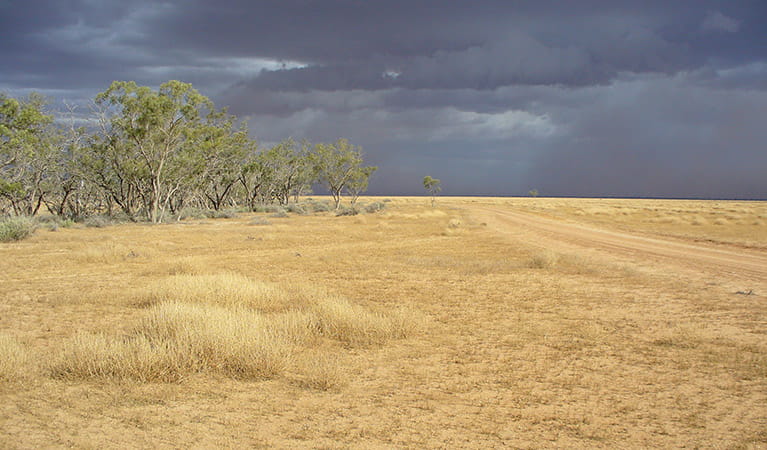Willandra National Park
Learn more
Learn more about why this park is special
Willandra National Park is a special place. Here are just some of the reasons why:
What bird is that?

Could there really be 195 species of birdlife within an area of less than 20,000ha? The diversity of Willandra's natural environment — from woodland and wetland to grassland and open plain — provides a variety of habitats. The result is an eclectic mix that includes emu, swan, seagull, night heron, raptor and duck. Set yourself the challenge to see how many different birds you can spot during your visit.
- Nilla Yannagalang Billana The Nilla Yannagalang Billana is an easy walking track that follows Willandra Creek and passes sites of great historical and cultural significance.
The ringer looks around

Big Willandra Station once stretched from Hillston to Mossgiel and covered an area eight times that of what is now Willandra National Park. Some buildings from the huge merino stud are in ruins, while others have been restored. In its time, Big Willandra saw it all: illegal squatting, leasehold, freehold, homesteading, the establishment of the Western Lands Commission, resumptions and soldier settler occupation. Today, you can enjoy cheap heritage accommodation, ideal for a weekend family or group getaway.
- Merton motor trail Whether you’re driving or cycling, the Merton motor trail at Willandra National Park is the perfect way to experience the park’s various wildlife habitats and historic past.
- Nilla Yannagalang Billana The Nilla Yannagalang Billana is an easy walking track that follows Willandra Creek and passes sites of great historical and cultural significance.
- Willandra Homestead Visit Willandra Homestead, the lovingly restored pastoral station of Big Willandra. Step back in time, enjoy a barbecue and watch waterbirds on Willandra Creek.
- Willandra shearing precinct Explore the rustic and distinctive woolshed and shearers’ quarters of the Willandra Shearing precinct to experience the fascinating working history of Big Willandra.
Plain to see

Windmill, cane, spear and white top - the names of Australian native grasses really have evolved to become far more fun than their original Latin terms. These grasses now make up most of the ground cover on the park's plains. Saltbush and cottonbush dominated - and still does - but Europeans quickly recognised the nutritional value of these plants and a century of grazing has changed the environment. A hike through the wetlands, woodlands and grasslands of the park, rich with birds and animals, is a reminder of how nature continues to adapt.
- Nilla Yannagalang Billana The Nilla Yannagalang Billana is an easy walking track that follows Willandra Creek and passes sites of great historical and cultural significance.
A closer look at Aboriginal culture

Evidence of Aboriginal people's lives on this land can best be seen on the scalds near Halls Lake, near the Merton trail, where erosion has exposed a number of objects. Take a look at (but please don't touch) the remains of oven hearths, broken pieces of grinding dishes and stone flakes. Nilla Yannagalang Billana, the only formal walking track in the park, means 'walking along together' in Wiradjuri.
- Merton motor trail Whether you’re driving or cycling, the Merton motor trail at Willandra National Park is the perfect way to experience the park’s various wildlife habitats and historic past.